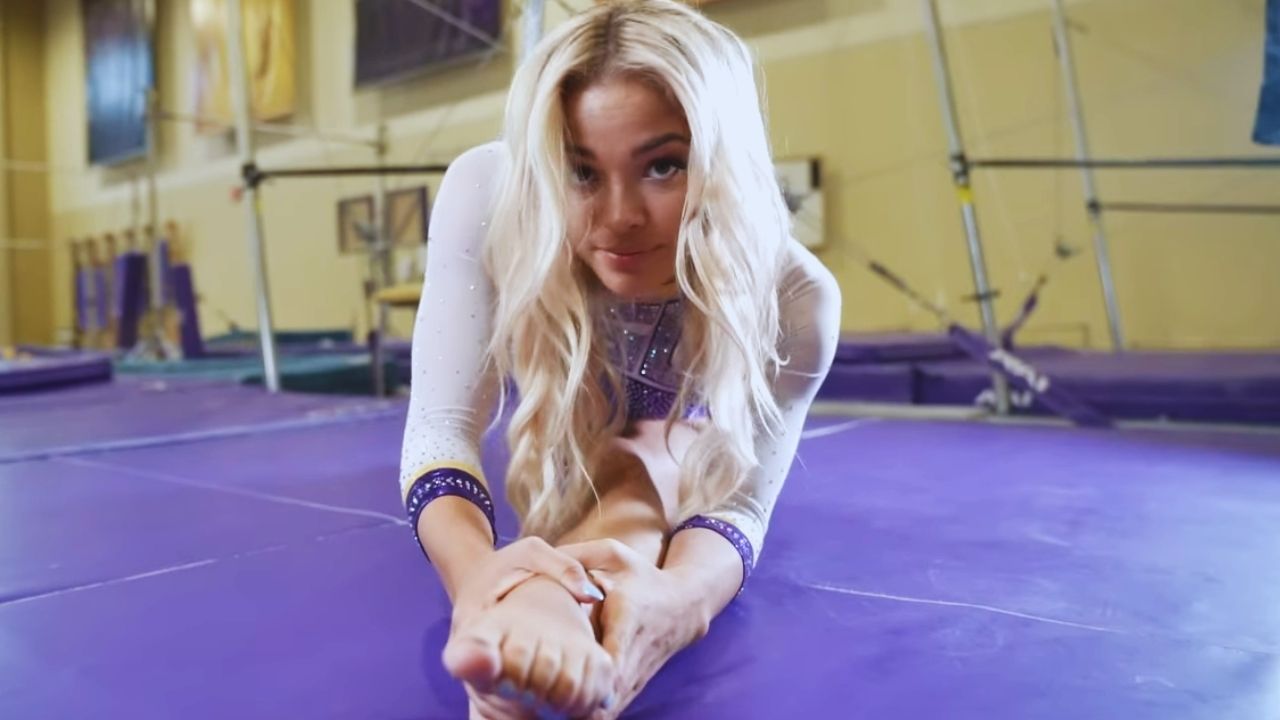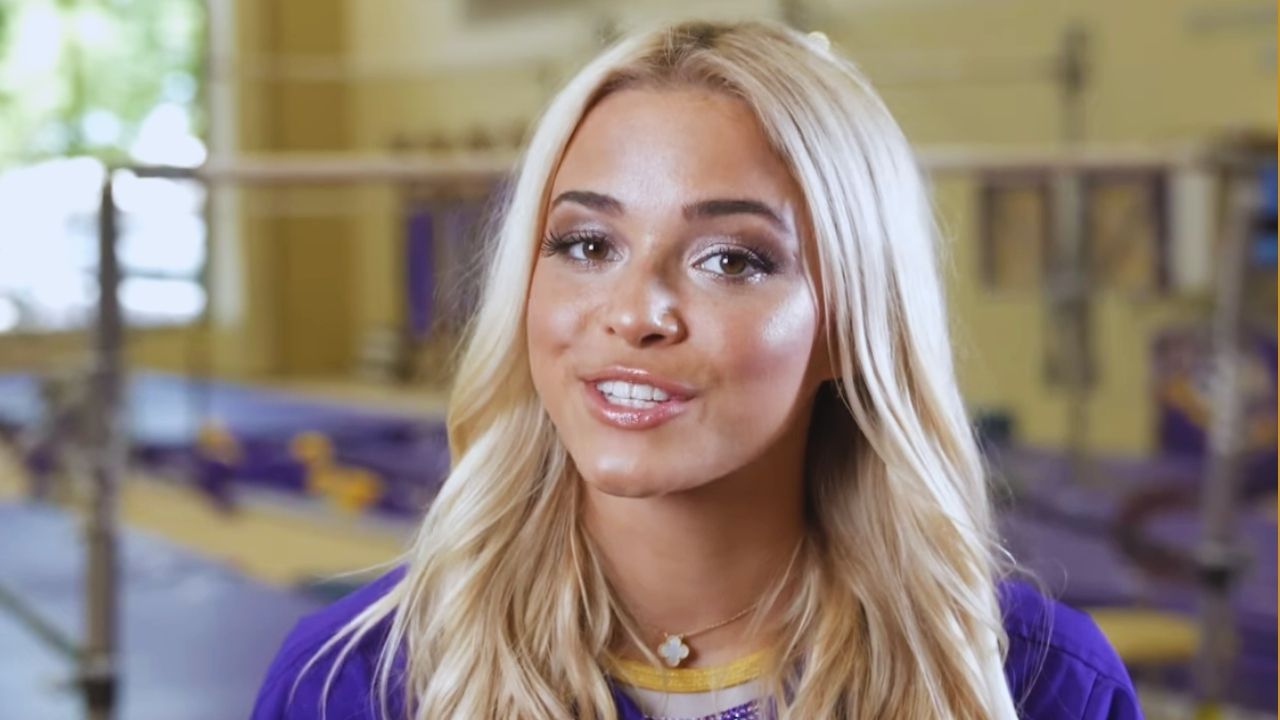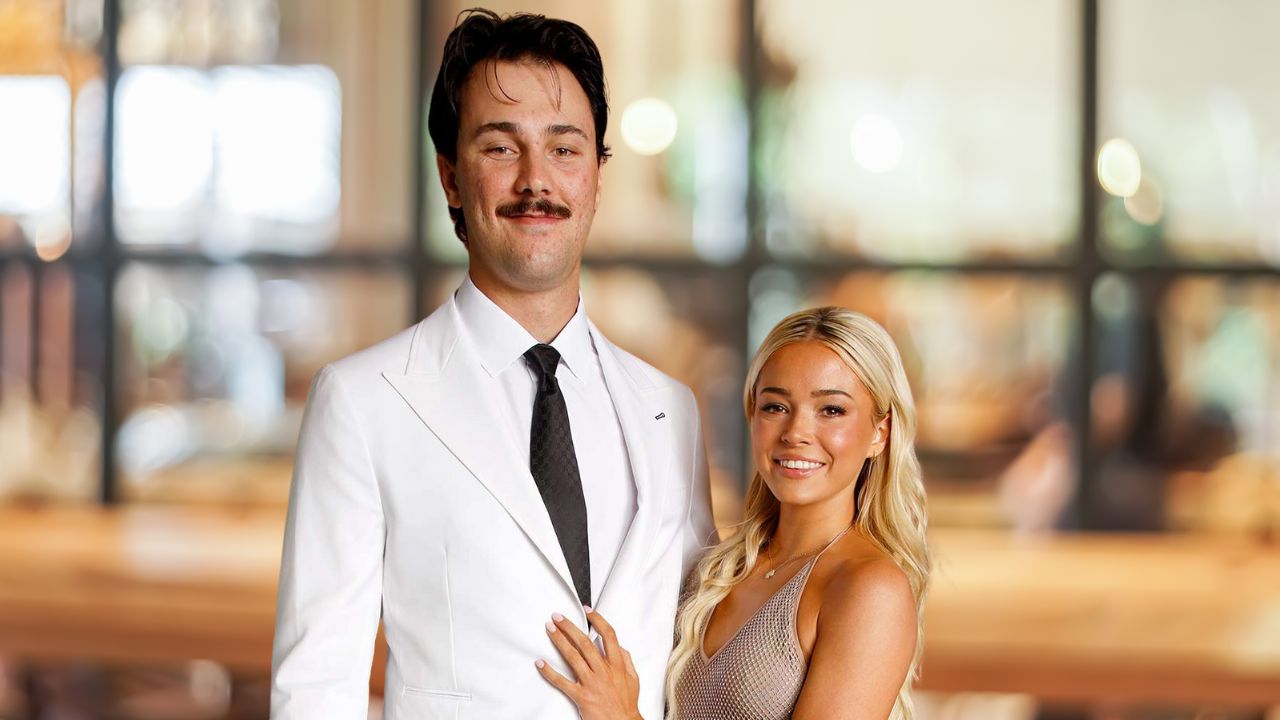Are you curious about Puerto Rico and its many fascinating aspects? Are you eager to learn fun facts about Puerto Rico? The island is packed with unique features that make it a must-learn destination. From its rich cultural heritage to its breathtaking natural beauty, there’s so much to discover about this Caribbean gem.
What makes Puerto Rico so special? Whether you’re interested in its history, culture, or simply looking for fun facts, this article will provide you with intriguing insights about the island. Get ready to explore and broaden your knowledge about Puerto Rico in a fun and engaging way! Now start reading the fun facts about Puerto Rico!
1. Puerto Rico’s Official Languages are Spanish and English
Spanish and English are the official languages of Puerto Rico. This dual-language setup reflects its rich cultural history.
Spanish is the most widely spoken language on the island. Puerto Ricans use it in daily life, at home, and in schools. You will hear Spanish in conversations, media, and local businesses.
English, on the other hand, is also important. It is taught in schools and is used in government and legal documents. You will find that many Puerto Ricans speak English, especially in tourist areas and businesses.
Why does Puerto Rico have two official languages? The answer lies in its history. Puerto Rico was a Spanish colony for over 400 years before it became a U.S. territory in 1898. This long Spanish influence made Spanish deeply rooted in Puerto Rican culture.
When the U.S. took control, English was introduced and became a significant part of the education system and official matters. Today, both languages coexist, showcasing the blending of Spanish and American influences.
Language in Puerto Rico is more than just a means of communication. It is a vital part of the island’s identity. The use of both languages highlights the unique cultural fusion present in Puerto Rico.
Whether you’re planning a visit or are simply curious about this vibrant place, knowing that Spanish and English are official languages can be quite helpful. It makes Puerto Rico an accessible and welcoming destination for both Spanish and English speakers.
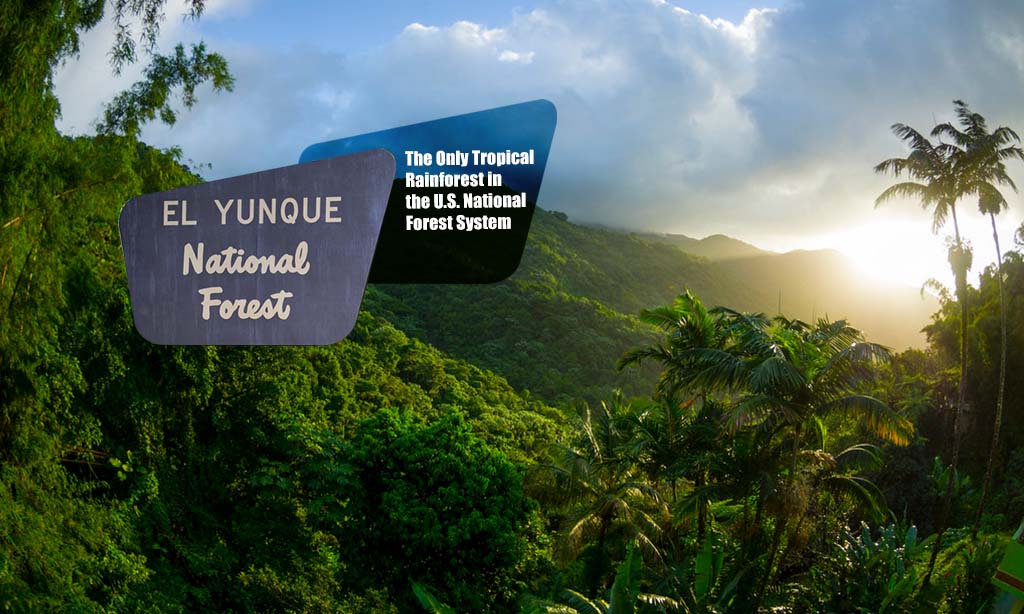
2. El Yunque National Forest is the Only Tropical Rainforest in the U.S. National Forest System
El Yunque National Forest is unique. It’s the only tropical rainforest in the U.S. National Forest System. Located in northeastern Puerto Rico, it covers nearly 29,000 acres.
Why is El Yunque special? It’s known for its incredible biodiversity. You can find many plant and animal species there. Some of them can’t be found anywhere else in the United States.
El Yunque’s name has roots in Puerto Rican culture. Many believe it comes from the Taíno word “Yuke,” meaning “white earth.” Others think it’s named after Yúcahu, a Taíno god.
The forest offers more than just trees. You can explore mountains, rivers, and trails. It’s a great spot for outdoor activities. You can hike, swim in rivers, and enjoy the stunning scenery.
One of the famous spots in El Yunque is the Yokahú Observation Tower. Built in the 1960s, it stands 69 feet tall. From the top, you get a fantastic view of the forest’s canopy.
El Yunque is smaller in size compared to other U.S. forests, but its importance is huge. It plays a vital role in protecting Puerto Rico’s natural diversity and cultural heritage.
3. The island is roughly 100 miles long and 35 miles wide
Did you know that Puerto Rico is approximately 100 miles long and 35 miles wide? Despite its small size, this island packs a diverse range of landscapes and attractions. You can traverse the entire island in just a few hours by car.
The compact size of Puerto Rico makes it easy to explore many destinations in a short time. From the bustling streets of San Juan to the tranquil beaches of Vieques, there’s something for everyone.
This small size also means that natural wonders are never far away. You can visit lush rainforests, such as El Yunque, and then head to sandy beaches on the same day. The island’s geography is as diverse as it is beautiful.
Exploring Puerto Rico feels like visiting multiple countries all in one place. Each region has its own unique charm, culture, and scenery. You never have to worry about long, exhausting travel times here.
So, if you love traveling without the hassle of long journeys, Puerto Rico’s size is perfect for you. Spend your days enjoying a variety of activities all within a short driving distance.
4. San Juan is the oldest city in the U.S. territory, founded in 1521
San Juan, the capital of Puerto Rico, is the oldest city under U.S. jurisdiction. Founded in 1521, it has a rich history that spans over five centuries. This makes it one of the most historically significant cities in the Americas.
The city was originally named Puerto Rico, while the island itself was called San Juan. This was later reversed, but the historical significance remains intact. San Juan has been a vital port and hub for centuries, playing an important role in trade and military history.
San Juan’s historical architecture is a highlight. Old San Juan is particularly famous, with cobblestone streets, colorful buildings, and impressive fortresses. The city’s Spanish colonial buildings reflect its long and diverse history.
Notable landmarks include El Morro and San Cristóbal forts, built to defend against attacks. These structures are part of the San Juan National Historic Site and attract many visitors. You can walk through these forts and get a glimpse into the past.
Old San Juan also boasts the Casa Blanca Museum, once the residence of Juan Ponce de León’s family. This museum offers more details about San Juan’s colonial past and the daily lives of its early residents.
Walking through San Juan, you will experience a blend of old and new. The city’s vibrant culture, bustling nightlife, and historical sites make it a unique destination. The streets of Old San Juan, like Calle del Cristo, are especially enchanting.
San Juan’s long history and cultural richness make it a fascinating place to visit. This city is a testament to the resilience and spirit of its people, preserving their heritage while embracing modernity.
5. Puerto Rico Uses the U.S. Dollar as Its Currency
Puerto Rico’s official currency is the U.S. dollar. This is because Puerto Rico is a territory of the United States. This means that if you travel from the mainland U.S., you won’t need to exchange money.
The U.S. dollar is often called “buck” or “greenback” in the continental U.S. In Puerto Rico, it is sometimes referred to as “dólar” or “peso.” This simple currency system makes transactions much easier for American tourists.
You will find the same denominations in Puerto Rico as in the U.S. These include paper bills of $1, $5, $10, $20, $50, and $100. Coins include pennies (1¢), nickels (5¢), dimes (10¢), and quarters (25¢).
ATMs and banks in Puerto Rico dispense U.S. dollars. This makes it convenient for travelers to withdraw cash. Credit cards are widely accepted, so you can use them for most purchases.
Using the U.S. dollar ties Puerto Rico closely to the mainland economy. This helps in trade and tourism, benefitting both locals and visitors. There are no complicated currency conversions needed, making your trip simpler.
When planning a trip to Puerto Rico, you can budget just as you would for any U.S. city. This makes it easier to estimate costs for lodging, food, and activities. Knowing the currency ahead of time can save you from unexpected surprises.
6. The coquí frog is an endemic symbol of Puerto Rico
Did you know that Puerto Rico has a tiny frog called the coquí? This small amphibian is a huge part of Puerto Rican culture. The coquí frog is unique to Puerto Rico and cannot be found anywhere else in the world.
One of the most notable things about the coquí is its distinct call. The male coquí’s song, which sounds like “co-kee,” can reach up to 100 decibels. That’s louder than a lawnmower! The “co” part of the call keeps other males away, while the “kee” part attracts females.
There are 17 species of coquí frogs in Puerto Rico. Thirteen of these can be found in El Yunque, the island’s famous rainforest. Each species has its own unique traits and locations where they live.
These frogs are not just loud but also fascinating in their appearance. They come in various colors, including brown, yellow, and green. Unlike many other frogs, coquí frogs do not have webbed feet. Instead, they have special toe pads that help them climb trees and other surfaces.
The coquí frog is such a beloved symbol in Puerto Rico that you can find it represented in art, music, and even stories. It embodies the spirit of the island and its people—small, yet full of life and voice. So, the next time you hear about Puerto Rico, remember the tiny coquí frog that sings its way into the hearts of everyone who hears it.
7. Puerto Rico has more than 270 miles of coastline
Puerto Rico boasts an impressive coastline stretching over 270 miles. This makes it a prime spot for beach lovers.
The coastline is dotted with coves, bays, and lagoons, offering diverse landscapes. From sandy shores to rocky cliffs, it has something for everyone.
Do you love water activities? Puerto Rico’s coastline offers plenty of options. You can swim, snorkel, kayak, and more.
The beaches also cater to different tastes. Whether you want to surf big waves or relax on a calm beach, Puerto Rico won’t disappoint.
Coastal towns add to the charm. You can enjoy local cuisine and experience Puerto Rican culture right near the water.
Some beaches are even recognized with Blue Flag awards. This ensures clean and safe environments for visitors.
8. Old San Juan features colorful Spanish colonial buildings
Old San Juan is known for its vibrant Spanish colonial buildings. These structures are painted in bright hues of blue, yellow, pink, and many other colors. Walking through the streets feels like stepping into a living painting.
The historic architecture dates back to the 16th century. The buildings have thick walls and cobblestone streets that add to their charm. Many of these structures have been preserved and restored, keeping their original beauty.
These colorful buildings often have balconies adorned with flowers. They also feature detailed ironwork and wooden doors. The combination of colors and architectural details creates a unique atmosphere.
One famous street in Old San Juan is Calle Fortaleza. This street is lined with pastel-colored buildings and leads to the Governor’s Mansion. It’s one of the most photographed spots in the city.
Exploring Old San Juan on foot allows you to appreciate the beauty of these buildings up close. You can see how each building tells its own story through its colors and design. Many have been converted into shops, cafes, and museums, adding to the area’s lively culture.
9. Reggaeton music originated in Puerto Rico
Reggaeton is a genre that combines Latin rhythms with reggae and hip-hop influences. It started in Puerto Rico in the late 1990s. This music became very popular and spread quickly around the world.
The genre is famous for its distinctive beat called “dembow.” This beat reflects its reggae roots and gives reggaeton its unique sound.
Many reggaeton artists come from Puerto Rico. Some of the most famous names include Daddy Yankee, Bad Bunny, and J Balvin. Their songs often top the charts and gain millions of streams online.
Reggaeton’s popularity surged with hits like “Despacito” by Luis Fonsi and Daddy Yankee. It became the most-streamed song within six months of its release in 2017.
Nightclubs in Puerto Rico, like Fifty Eight in San Juan, often play reggaeton. These places are hotspots for fans of the genre to dance and enjoy the music.
The genre’s lyrics often reflect life in Puerto Rico, addressing social issues, love, and daily struggles. This connection makes it resonate deeply with many listeners.
Reggaeton continues to evolve. It adapts to new trends while maintaining its core elements. Its influence on global music is undeniable, making it a key part of Puerto Rico’s cultural identity.
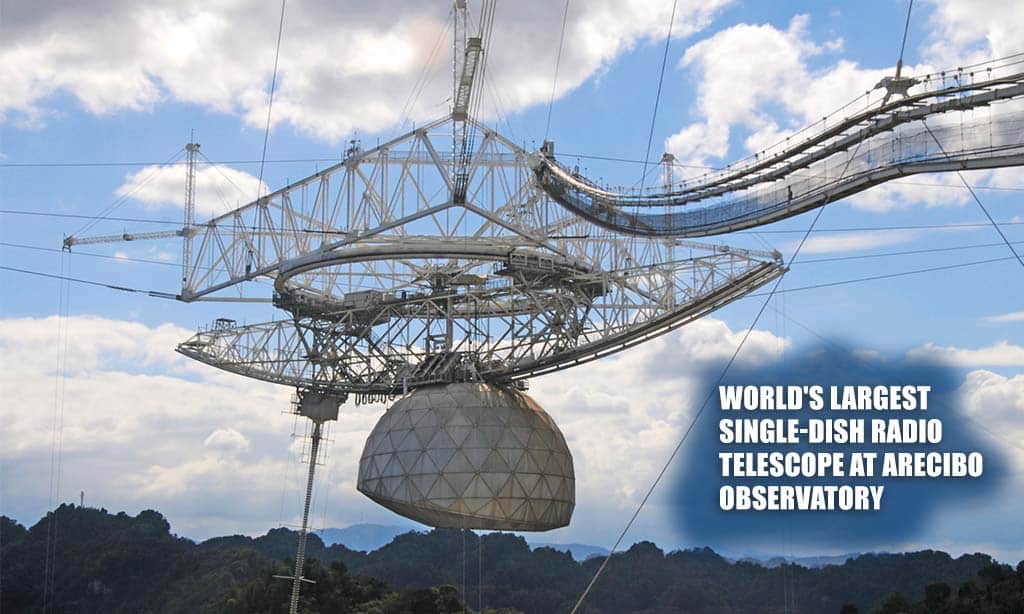
10. The island is home to the world’s largest single-dish radio telescope at Arecibo Observatory
Did you know that in Puerto Rico, there’s a giant radio telescope that has amazed scientists for decades? The Arecibo Observatory once housed the world’s largest single-dish radio telescope.
You would find this massive dish in Barrio Esperanza, Arecibo. It’s 305 meters (1,000 feet) wide and was built into a natural sinkhole, making it a marvel of engineering.
The observatory helped make many important scientific discoveries. It was used to study the atmosphere, map asteroids, and even search for extraterrestrial life. Imagine all the data it collected over more than 50 years!
The telescope was a key tool for researchers worldwide. It had a large reflector dish made of perforated aluminum panels, which could collect radio waves from space. This unique design allowed it to function both as a radar and a radio telescope.
Unfortunately, the telescope suffered damage in recent years and ultimately collapsed. Despite its fall, the legacy of the Arecibo Observatory lives on. Scientists continue to analyze the valuable data it provided over its long history.
This observatory also appeared in popular culture. You might recognize it from movies like “Contact” and the James Bond film “GoldenEye.” It truly was an icon of both science and entertainment.
Visiting the site, you can still see the remnants of its incredible structure. The observatory continues to inspire future generations of astronomers and engineers.
11. Bioluminescent bays like Mosquito Bay in Vieques glow in the dark
Imagine paddling through a bay where the water glows with every movement. This is what you will find at Mosquito Bay in Vieques. It is known as the brightest bioluminescent bay in the world.
Bioluminescence is when living organisms produce light. In Mosquito Bay, this glow comes from tiny organisms called dinoflagellates. When disturbed, they emit a blue-green light, creating a magical effect on the water’s surface.
Mosquito Bay is located on the southern shore of Vieques, an island seven miles off the southeast coast of Puerto Rico. The best way to reach it is by ferry from the town of Ceiba.
When exploring Mosquito Bay, you typically use a glass-bottomed kayak. This way, you can see the glowing water below you as you paddle. The experience is breathtaking and unforgettable.
The bay shines brightest during moonless nights. This is when the contrast between the dark sky and glowing water is most striking. It is a stunning sight that attracts visitors from around the world.
Besides its natural beauty, Mosquito Bay has an interesting history. The bay was named after the pirate ship El Mosquito, belonging to Puerto Rican pirate Roberto Cofresi. The glowing water was believed to scare enemies, making it a legendary spot.
Plan your visit to see the glow-in-the-dark magic of Mosquito Bay and enjoy an extraordinary natural phenomenon that feels almost otherworldly.
12. Puerto Ricans are U.S. citizens since 1917
Did you know that Puerto Ricans have been U.S. citizens since 1917? This significant event happened when the U.S. Congress passed the Jones-Shafroth Act.
The law was signed by President Woodrow Wilson on March 2, 1917. This change was strategically timed just before the U.S. entered World War I.
Despite gaining citizenship, Puerto Ricans living on the island don’t have the same rights as those in the states. They can’t vote for the U.S. president in general elections.
Puerto Rico also lacks voting representation in Congress. They have a resident commissioner in the U.S. House of Representatives who can participate in debates but can’t vote on legislation.
The Jones-Shafroth Act did bring some benefits. It allowed Puerto Ricans to travel freely between the island and the mainland U.S. without needing a passport or visa.
The act also made Puerto Ricans eligible for the military draft. Many served in the U.S. military during World War I and subsequent conflicts.
This unique status often sparks debates. Some people advocate for statehood to gain full rights, while others prefer independence or the existing commonwealth status.
So, even though Puerto Ricans are U.S. citizens, their experience is different from those living on the mainland. This history shapes Puerto Rico’s complex relationship with the U.S.
13. El Morro and San Cristóbal are two significant historical forts in San Juan
El Morro, also known as Castillo San Felipe del Morro, is a large fort in San Juan, Puerto Rico. Built by Spanish engineers, it took over 250 years to complete. Construction started in 1539 and finished around 1790. This fort offers stunning ocean views and a glimpse into Puerto Rico’s past.
San Cristóbal, another important fort, is also located in San Juan. Together with El Morro, it forms the San Juan National Historic Site. San Cristóbal is larger than El Morro and was completed in 1783. It was designed to protect the city from land attacks.
Both forts are part of the U.S. National Parks System, ensuring their preservation. They feature intricate architecture and provide visitors with a rich historical experience. While exploring these forts, you can see cannons, walls, and tunnels, all telling the story of Puerto Rico’s history.
Visiting these forts is a must when you’re in San Juan. They offer an educational experience, showcasing the strategic importance of Puerto Rico in the Caribbean. The forts played key roles in battles and were vital in defending the island from invaders.
El Morro and San Cristóbal are not just historical landmarks but also provide beautiful views of the city and the ocean. Their locations are perfect for photography and offer unique perspectives of San Juan. Whether you’re a history buff or just looking to explore, these forts are worth your time.
14. The Bacardi rum factory is located in Cataño
The Bacardi rum factory, known as Casa Bacardí, is in Cataño, Puerto Rico. Visiting Casa Bacardí is a popular activity for tourists and locals alike. The factory offers several different tours, each highlighting a unique aspect of Bacardi’s history and rum production process.
Casa Bacardí is the largest premium rum distillery in the world. Founded by Facundo Bacardi Masso in the 1800s, Bacardi remains a big name in the world of rum. It’s hard to miss the iconic bat logo, symbolizing protection and good fortune.
You can learn how Bacardi rum was originally from Cuba and how it came to be made in Puerto Rico. The factory moved to Cataño in the 1930s and has been there ever since. Today, it produces a large portion of Bacardi’s rum products.
The tours at Casa Bacardí are both fun and educational. There are guided tours where you can explore the distillery and see how rum is made. You can also take part in a Rum Tasting Tour or a Mixology Class to learn how to make your own cocktails.
Casa Bacardí also has a visitor center that offers two free drinks with each tour. You can enjoy these while taking in the beautiful views of the San Juan Bay. Whether you’re a rum enthusiast or just curious, a visit to Casa Bacardí in Cataño is sure to be a memorable experience.
15. Puerto Rico celebrates its own version of Mardi Gras called ‘Carnaval Ponceño’
Carnaval Ponceño is Puerto Rico’s colorful and lively version of Mardi Gras. It takes place in Ponce, a city on the southern coast of the island. The celebration usually happens in late February or early March, right before Lent.
This carnival has been a tradition since the 19th century. The first recorded event was in 1858. People wear vibrant costumes and masks, adding to the festive atmosphere.
One of the highlights is the Parade of the Carnival King. This parade kicks off the festivities with music, dancing, and colorful floats. The energy is contagious, and people of all ages join in the fun.
Street parties are everywhere during Carnaval Ponceño. You’ll find live music concerts, dancing, and street performers entertaining the crowds. It’s a social event where everyone comes together to celebrate.
A unique part of this carnival is the Burial of the Sardine. This event happens on Fat Tuesday night and marks the end of the carnival. It’s a symbolic ceremony that includes a mock funeral procession.
Carnaval Ponceño is Puerto Rico’s biggest party. Over 100,000 people come to Ponce to take part. The streets are filled with revelers, creating a lively and unforgettable atmosphere.
This celebration is not just about fun. It’s a chance to experience Puerto Rican culture and traditions. From the costumes to the music, every part of the carnival reflects the island’s rich heritage.
16. The island has 78 municipalities, each with a mayor
Puerto Rico is divided into 78 municipalities. Each municipality has its own mayor. The mayors are elected by the residents. This shows the island’s strong local governance system.
The municipalities can be found across the entire island. Some are on the two smaller islands of Culebra and Vieques. These municipalities play a big role in local administration.
Each municipality is further divided into smaller areas called barrios. These are neighborhoods or communities within the municipalities. Barrios have no political power but are important in identifying regions.
The capital, San Juan, is one of these municipalities. It is the largest and most populated. Other municipalities include renowned places like Ponce, Mayagüez, and Arecibo.
This system ensures that local needs are addressed. By electing mayors, the residents have a direct say in their local government. This is a key feature of Puerto Rico’s administrative structure.
17. Salsa music is a critical component of Puerto Rican culture
Salsa music is more than just a genre in Puerto Rico; it’s a way of life. Historically, salsa evolved from a blend of Cuban, African, and Puerto Rican rhythms. While the music originated in New York City in the 1960s, its true heart is in Puerto Rico.
In Puerto Rico, salsa isn’t just music; it’s a cultural expression. It represents the island’s vibrant and diverse history. Artists like Willie Colón and El Gran Combo de Puerto Rico have made significant contributions to the genre. Their songs often highlight the island’s pride and struggles.
El Gran Combo de Puerto Rico is a significant name in salsa history. The band has been around for more than 50 years, symbolizing the longevity and importance of salsa in Puerto Rican culture. Their music brings people together, from street parties to formal celebrations.
Salsa is also tied to dance. In Puerto Rico, learning to dance salsa is almost a rite of passage. The dance floors light up with energetic moves that mirror the music’s lively beats. Every step tells a story, connecting generations and communities.
Do you know about the famous Willie Colón’s song, “La Borinqueña”? It’s a salsa tribute to Puerto Rico’s national anthem. This song is a vivid illustration of how salsa music can capture the essence of Puerto Rican patriotism and culture.
Salsa music festivals and events are a staple on the island. These gatherings celebrate the genre’s continuing influence, drawing locals and tourists alike. The vibrant beats and soulful lyrics of salsa music are a testament to Puerto Rico’s enduring and dynamic cultural landscape.
18. Baseball is the most popular sport in Puerto Rico
Baseball holds a special place in Puerto Rican culture. Introduced in the late 19th century, it quickly became the island’s favorite pastime.
In 1897, the first baseball clubs were formed. This was right before the Spanish-American War. Since then, the sport has seen incredible growth on the island.
Puerto Rico’s first professional league started in 1938. This league was later renamed Liga de Béisbol Profesional de Puerto Rico in 1942. Famous players from MLB have played in this league, raising its profile even more.
The love for baseball in Puerto Rico goes beyond just playing games. It’s part of the island’s rich history and identity. Games are social events where families and friends gather to cheer for their teams.
Many Puerto Ricans have made it big in Major League Baseball. Stars like Roberto Clemente and Iván Rodríguez are celebrated heroes. They inspire young players on the island to dream big.
Baseball fields are common sights across Puerto Rico. These fields are often filled with aspiring players of all ages. From Little League to professional levels, the sport thrives.
Baseball is also important in schools. Many schools have baseball teams, and the sport is part of physical education programs. This helps nurture talent from a young age.
Why is baseball so loved in Puerto Rico? It’s more than a game; it’s about community, history, and pride. The sport unites people and brings joy to many lives.
19. The Puerto Rican flag was officially adopted in 1952
Did you know the current design of the Puerto Rican flag was officially adopted in 1952? This year marked a significant moment in the island’s history when it became a Commonwealth of the United States.
The flag’s design features five horizontal stripes that alternate between three red and two white stripes. The bold colors and clean lines make this flag stand out.
In the top left corner, a blue triangle holds a single white, five-pointed star. This star represents the Commonwealth of Puerto Rico itself. The blue triangle symbolizes the sky and coastal waters of the island.
The red stripes symbolize the blood that nourishes the three branches of government. The white stripes stand for the rights of the people and the peace the nation seeks. Each element of the flag’s design holds deep meaning and tells a rich story of Puerto Rican identity.
When you see the Puerto Rican flag, you’re not just looking at a piece of fabric. You’re seeing a symbol filled with history, pride, and spirit. This flag waves as a reminder of the island’s unique culture and its journey through history.
20. Tostones, fried plantains, are a staple dish
Tostones are a popular dish in Puerto Rico. They are made from green plantains, which are a type of banana. Plantains are firmer and less sweet than regular bananas.
To make tostones, you peel the plantains and cut them into 1-inch slices. These slices are then fried in oil until they turn golden brown.
After the first fry, you smash the plantain slices. Use a flat surface or a tostone press for this. Once flattened, they are fried again until they are crispy and golden.
Tostones are usually served as a side dish. They can accompany a variety of main courses, from chicken to seafood. Some people also enjoy dipping them in garlic sauce or eating them with rice and beans.
Another variation involves soaking the fried plantains in water with lime juice and salt before the second fry. This can add extra flavor and crispiness.
Tostones are more than just a dish; they are part of Puerto Rican culture. They are commonly eaten at gatherings and celebrations. Making tostones can be a fun activity to share with family and friends.
Would you like to try making your own tostones at home? All you need are green plantains, oil, and salt. Following these simple steps, you can enjoy a taste of Puerto Rico right in your kitchen.
21. Puerto Rico has a unique status as an unincorporated U.S. territory
Puerto Rico is an unincorporated territory of the United States. It is officially called the Commonwealth of Puerto Rico. This status means it is part of the U.S., but it is not one of the 50 states.
Because of this status, many U.S. federal laws apply in Puerto Rico. However, some U.S. laws do not. For example, residents do not vote in U.S. presidential elections.
Puerto Ricans are U.S. citizens, which means they can move freely between the island and the mainland. They have their own local government and constitution.
The U.S. Congress has ultimate control over Puerto Rico. This means it has the power to make laws for the territory and change its status.
This unique status has caused debates and political movements in Puerto Rico. Some people want it to become a U.S. state. Others prefer it to be an independent nation. Some are in favor of maintaining the current commonwealth status.
Being an unincorporated territory affects many aspects of life in Puerto Rico. This includes its economy, politics, and culture. It is an important part of Puerto Rican identity and history.
22. Roberto Clemente, a famous baseball player, hails from Puerto Rico
Roberto Clemente, born on August 18, 1934, in Carolina, Puerto Rico, is a legendary baseball player. He played 18 seasons in Major League Baseball (MLB) for the Pittsburgh Pirates. As a right fielder, Clemente was known for his strong throwing arm and excellent batting skills.
Clemente’s talent was evident from a young age. He started his professional career with the Santurce Crabbers in the Puerto Rican Baseball League. His skills quickly caught the attention of MLB scouts. By 1954, he was playing for the Dodgers’ Triple-A team in Montreal.
Throughout his MLB career, Clemente achieved many milestones. He was a 15-time All-Star and won 12 Gold Glove Awards. His career batting average was .317, and he collected exactly 3,000 hits. Clemente was also known for his humanitarian efforts, often helping those in need in his native Puerto Rico and other countries.
Tragically, Clemente’s life was cut short on December 31, 1972. He died in a plane crash while delivering aid to earthquake victims in Nicaragua. Despite his early death, his legacy continues to inspire. The National Baseball Hall of Fame waived its five-year waiting period for his induction in 1973, honoring him immediately.
Clemente’s impact on baseball and his humanitarian work have made him a beloved figure. His story remains a source of pride for Puerto Rico, and his contributions to the sport are celebrated worldwide.
23. Puerto Rican Coffee is Renowned Worldwide
Puerto Rican coffee is truly special. Known for its rich and smooth flavor, it stands out among other coffee varieties. The island’s unique climate, with its combination of warm temperatures and mountainous regions, creates perfect conditions for growing high-quality coffee beans.
The coffee plants cultivated in Puerto Rico are 100% Arabica. This type of coffee bean is celebrated for its superior taste. You can often find notes of chocolate, dry fruits, and spices in every cup. The sweetness and smoothness of Puerto Rican coffee make it a favorite among coffee enthusiasts.
Famous Puerto Rican coffee farms include Hacienda San Pedro and farms in regions like Jayuya, Adjuntas, and Lares. These farms have a reputation for producing some of the best coffee beans in the world. When you drink coffee from these farms, you are tasting the dedication and tradition of Puerto Rican coffee growers.
In the past, Puerto Rico was one of the largest coffee exporters in the world. Although production has declined due to challenges like hurricanes and labor shortages, the quality of Puerto Rican coffee remains top-notch. The coffee industry in Puerto Rico continues to innovate and adapt, ensuring that its coffee remains in high demand.
Visiting local cafes in places like Ponce or Yauco can give you a firsthand experience of Puerto Rican coffee. Whether you enjoy it black or with milk and sugar, the unique flavors will definitely leave an impression. Next time you’re looking for a coffee that’s rich in history and taste, give Puerto Rican coffee a try.
24. The island has five Miss Universe winners
Did you know Puerto Rico has a remarkable record in the Miss Universe pageant?
Puerto Rican contestants have won the prestigious title five times. These victories occurred in 1970, 1985, 1993, 2001, and 2006. Each win has brought immense pride to the island.
These winners showcased Puerto Rico’s beauty, talent, and culture on a global stage. The success in the pageant highlights how unique and impressive the people of Puerto Rico are.
They have become role models for many young women in Puerto Rico. They inspire the next generations to chase their dreams and believe in themselves.
Puerto Rico may be small, but its impact in the Miss Universe pageant is significant. These achievements have left a lasting legacy and continue to inspire.

25. Rum production is a significant industry, with over 80% of the world’s rum coming from Puerto Rico
Did you know that Puerto Rico is known as the Rum Capital of the World? The island has been producing rum for over 450 years.
Puerto Rico’s rum industry started back in the 17th century during the sugarcane refining process.
Today, rum production is crucial to Puerto Rico’s economy, bringing in over $300 million each year.
The island’s rum production is dominated by large distilleries. These distilleries benefit from a federal rum rebate tax program established in 1917.
This program helps support the local rum production industry and boosts Puerto Rico’s economy.
What makes Puerto Rican rum so special? It’s made from sugarcane, which thrives on the island. Rum makers use traditional methods passed down through generations.
Puerto Rico’s most famous rum brands include Bacardi and Don Q. Don Q alone sells over 140,000 nine-liter cases yearly.
The Rums of Puerto Rico program, created in 1948, helps highlight the island’s rich rum heritage.
The program is managed by the Puerto Rico Industrial Development Company, promoting the unique qualities of Puerto Rican rum.
When you think of rum, Puerto Rico should come to mind. Its rum is renowned worldwide for its quality and flavorful taste. The island continues to lead in rum production, making it a drink enjoyed globally.
26. Puerto Rican cuisine is a blend of Taíno, African, and Spanish influences
Puerto Rican cuisine is a unique mix of flavors and traditions. It combines elements from the Taíno, African, and Spanish cultures. Each group brought its own ingredients and cooking methods to the island.
The Taíno people, the island’s original inhabitants, used native ingredients like yuca, corn, and tropical fruits. They created dishes that were simple yet flavorful.
Spanish colonizers introduced olive oil, garlic, and various herbs and spices. They also brought techniques for preparing meats, such as stews and roasts, which became staples in Puerto Rican cooking.
African slaves brought their own culinary traditions. They used plantains and coconuts, creating dishes like mofongo and tostones. African cooking methods included frying and steaming, which are still popular today.
One example of this blend is arroz con gandules, a rice dish with pigeon peas, influenced by all three cultures. The result is a dish rich in flavor and history.
Another beloved dish is pasteles, a kind of tamale. It combines ingredients from the Taíno, Spanish, and African cuisines, wrapped in banana leaves and steamed.
Many Puerto Rican dishes showcase this cultural fusion. For instance, mofongo is a dish made from mashed plantains, garlic, and chicharrones (fried pork), all ingredients introduced by these diverse groups.
Puerto Rican cuisine isn’t just about the ingredients. It’s also about the stories and traditions passed down through generations. When you taste these dishes, you’re experiencing centuries of cultural blending.
So, the next time you enjoy Puerto Rican food, remember that each bite is a nod to the island’s rich and varied heritage.
27. La Perla in San Juan was a filming location for the music video ‘Despacito’
Have you watched the music video ‘Despacito’ by Luis Fonsi and Daddy Yankee? It’s a global hit with over 3 billion views on YouTube. One of its most recognizable features is the beautiful and colorful neighborhood where it was filmed: La Perla in San Juan, Puerto Rico.
La Perla is an iconic area located just outside the historic city walls of Old San Juan. Its vibrant houses and narrow streets create a unique backdrop that perfectly matched the feel of the song. The video showcases locals dancing and enjoying life, highlighting the community spirit of the neighborhood.
The music video had a significant impact on La Perla. After its release in 2017, the neighborhood saw a boom in tourism. Fans from around the world wanted to see the place where their favorite song was filmed. This surge in visitors brought more attention and economic opportunities to the area.
Visiting La Perla today offers a chance to experience a place rich in culture and history. While it gained fame through ‘Despacito,’ the community has been working for years to improve the neighborhood. Local organizations and residents have made tremendous efforts to revitalize and transform La Perla into a better place for everyone.
If you ever find yourself in San Juan, a trip to La Perla is a must. You can walk through the same streets where the video was filmed and feel the lively atmosphere that made ‘Despacito’ such a memorable music video.
28. The island observes its own holiday called ‘Discovery of Puerto Rico Day’ on November 19
Every year on November 19, Puerto Rico celebrates “Discovery of Puerto Rico Day.” This day marks when Christopher Columbus first arrived on the island in 1493. It is a public holiday and many places, like banks and schools, close in honor of this event.
During this holiday, you will see many buildings decorated with the Puerto Rican flag. The atmosphere is filled with pride and remembrance of the island’s history. This day helps the people of Puerto Rico connect with their cultural and historical roots.
As you walk around, you might observe parades and cultural events. These celebrations highlight the island’s rich heritage and historical significance. The community comes together to celebrate what makes Puerto Rico unique.
The name “Puerto Rico” translates to “rich port,” reflecting the island’s historical importance for the Spanish who were keen on settling here because of its resources. This holiday serves as a reminder of Puerto Rico’s long and storied past.
If you are visiting Puerto Rico during this time, you will get to experience a piece of its history firsthand. Joining in the celebrations can give you a deeper appreciation for the island and its people.
29. Puerto Rico hosts the Festival de la Novilla, celebrating agricultural traditions
Have you ever heard of the Festival de la Novilla? This colorful celebration takes place in the town of San Sebastián, Puerto Rico. It happens every year on the third weekend of January.
The festival centers around a heifer, known as a “novilla” in Spanish. This heifer is adorned with a crown of flowers and leads a grand parade through town.
During the festival, you’ll find live music, an amusement park, salsa dancing, and food stalls with delicious local treats. There’s also an artisan market where you can buy handmade crafts.
The event not only brings joy and excitement but also highlights Puerto Rico’s rich agricultural traditions. It started as a way to honor Saint Sebastian, the town’s patron saint.
Locals and visitors alike flock to the festival, making it one of the island’s most popular gatherings. The festivities showcase the importance of agriculture in Puerto Rico’s history and culture.
If you’re planning a trip to Puerto Rico in January, don’t miss this unique celebration. The Festival de la Novilla offers a wonderful glimpse into the island’s vibrant traditions.
30. The island features the third largest underground river in the world, Río Camuy
The Río Camuy is a remarkable natural feature in Puerto Rico. It is the third-largest underground river in the world. This river flows through an extensive network of limestone caves.
The Río Camuy Cave Park is where you can explore these fascinating underground waterways. The park is located in the municipalities of Camuy, Hatillo, and Lares. It offers a chance to witness the power of nature.
You can visit the park from Wednesday to Sunday, between 8:00 a.m. and 3:00 p.m. AST. Reservations are required to enter. The park boasts more than 220 caves and caverns. The impressive formations have been carved out over hundreds of thousands of years.
These caves were officially discovered in 1958. But archeological evidence shows that the indigenous people explored them long before. They are an important part of Puerto Rico’s natural heritage.
The park is also home to unique stalactites and stalagmites. These formations were created by the river’s flow over millennia. They create stunning and otherworldly landscapes.
For those visiting from San Juan, the drive to the park takes about 1 hour and 20 minutes. The main entrance is located in Quebrada, Camuy, on Carretera 129. Directions are clearly marked to ensure you find your way easily.
This awe-inspiring underground river is not just a natural wonder but a testament to the island’s rich geological history. Exploring the Río Camuy is a must for anyone interested in Puerto Rico’s natural beauty.
31. Puerto Rico has a thriving art scene with artists like Francisco Oller
Puerto Rico’s art scene is vibrant and diverse. Artists from the island have made significant contributions to the world of art. One of the most famous artists is Francisco Oller.
Born in San Juan in 1833, Francisco Oller is a key figure in Puerto Rican art. He is known for his detailed paintings of Puerto Rican landscapes and daily life. His works capture the essence of the island.
Oller was not just a painter; he was a pioneer. He bridged the gap between Caribbean art and European Impressionism. His influence extended beyond the island, impacting artists globally.
You can see Oller’s works in many museums and galleries in Puerto Rico. His paintings are celebrated for their beauty and historical significance. Visiting these exhibits gives you a glimpse into Puerto Rican heritage through art.
Puerto Rico’s art scene continues to thrive today. Artists like Rafael Tufiño and Ángel Botello have added to this legacy. They have brought attention to the island’s unique culture through their works.
You can explore Puerto Rican art in places like the Museo de Arte de Puerto Rico in San Juan. These venues showcase a wide range of art, from traditional to contemporary. You’ll find that the art scene in Puerto Rico is as vibrant as the island itself.
Puerto Rico’s art scene reflects its rich history and diverse culture. From Francisco Oller to modern artists, the island continues to make its mark on the world of art. If you’re an art lover, Puerto Rico is a must-visit destination.
32. Ricky Martin and Lin-Manuel Miranda are famous artists from Puerto Rico
Ricky Martin and Lin-Manuel Miranda are two of Puerto Rico’s most celebrated artists.
Ricky Martin rose to fame as a member of the boy band Menudo. His solo career took off with hits like “Livin’ la Vida Loca.” He has sold millions of albums worldwide and won multiple awards.
Lin-Manuel Miranda is a gifted playwright, composer, and actor. He created the Broadway hits “Hamilton” and “In the Heights.” His work blends different musical styles and tells powerful stories.
Both artists have deep connections to Puerto Rico. Ricky Martin was born in San Juan and regularly visits the island. He has also been active in humanitarian efforts, especially after Hurricane Maria.
Lin-Manuel Miranda’s parents are from Puerto Rico, and he spent time there growing up. He has used his platform to raise awareness and funds for the island’s recovery efforts.
You might know Ricky Martin from his energetic performances and catchy pop songs. He remains an influential figure in Latin music and pop culture.
Lin-Manuel Miranda is known for his groundbreaking musicals. His creative works have earned him numerous accolades, including Tony Awards and a Pulitzer Prize.
These artists are proud to represent Puerto Rico on the global stage. Their talents and contributions continue to inspire many people both on and off the island.
33. Many Puerto Ricans are bilingual, speaking both Spanish and English
Did you know many Puerto Ricans can speak two languages? Spanish and English are both official languages in Puerto Rico. This bilingual ability is due to the island’s unique history and its status as a U.S. territory.
Most Puerto Ricans grow up learning Spanish at home. Spanish is the dominant language used in daily life, schools, and media. However, English is also taught in schools from a young age.
Because both languages are part of the education system, many Puerto Ricans become fluent in both. Speaking English can open up more opportunities in business and travel.
In some areas, you might hear English and Spanish being spoken interchangeably. This mix of languages showcases the island’s rich cultural diversity.
The ability to speak two languages is a valuable skill. It makes it easier for Puerto Ricans to communicate with visitors and do business with the United States.
English is particularly important in urban areas and tourist spots. In these places, you will find signs, menus, and public information in both languages.
While not everyone is fluent in English, many Puerto Ricans have at least a basic understanding. This helps bridge any language gaps that might occur.
It’s interesting to see how language plays a role in everyday life. Whether it’s talking with neighbors or conducting official business, being bilingual is a common part of living in Puerto Rico.
34. Puerto Rico has a high literacy rate of about 94%
Did you know that Puerto Rico boasts a high literacy rate of around 94%? This impressive statistic means that most of the population can read and write, contributing significantly to the island’s cultural and economic development.
A high literacy rate opens up numerous opportunities for the people of Puerto Rico. It allows individuals to access better job prospects and improve their quality of life. Education is highly valued, and many Puerto Ricans take pride in their ability to stay informed and engaged.
Children in Puerto Rico often begin their education at a young age. Public schools offer free education from preschool through high school, which helps maintain the high literacy rate. Additionally, there are various colleges and universities on the island that further support higher education.
The commitment to education in Puerto Rico is evident in the number of people pursuing advanced degrees. Many students continue their studies beyond high school, seeking higher education in fields like science, technology, engineering, and mathematics (STEM).
Improved literacy rates can also lead to a more informed and active citizenry. Reading and writing skills enable Puerto Ricans to participate more fully in their communities and the democratic process. This active participation contributes to a vibrant and dynamic society.
Puerto Rico’s focus on education is a testament to its dedication to progress and development. By fostering literacy and learning, Puerto Ricans are able to build a brighter future for themselves and future generations.
35. Arecibo Observatory played a crucial role in SETI (Search for Extraterrestrial Intelligence) research
The Arecibo Observatory in Puerto Rico was a major player in the quest to find intelligent life beyond Earth.
Starting in 1998, this famous radio telescope supported NASA’s SETI program, which aimed to detect signs of extraterrestrial intelligence.
Arecibo’s groundbreaking setup combined advanced hardware and software to target specific signals.
This setup was pivotal for Project Phoenix, a significant private SETI initiative.
For years, the observatory scanned the skies, listening for potential messages from distant civilizations.
In 2020, the Arecibo Observatory collapsed, ending its ability to contribute to SETI research.
Despite its end, the observatory’s legacy lives on in the search for extraterrestrial intelligence.
36. Bomba and Plena are traditional music genres from Puerto Rico
Bomba and Plena are two unique music genres that come from Puerto Rico. Both styles are percussion-heavy and have deep roots in the island’s culture.
Bomba is one of the oldest musical genres in Puerto Rico. It was created by enslaved Africans on sugar plantations in the 17th century. The rhythms are infectious and make people want to dance.
Plena, on the other hand, emerged later in the coastal regions. It tells stories and often includes social and political themes. The rhythms are simpler than Bomba but equally engaging.
In Bomba, drummers use barriles (barrel-shaped drums) and the dancers’ movements dictate the rhythm. Plena usually involves panderos (hand drums) and often features lyrics sung in Spanish.
Both Bomba and Plena showcase the African heritage of Puerto Rico. You can hear these genres played during festivals, parades, and family gatherings.
The energy of Bomba and Plena is contagious. When you hear the drums and see people dancing, it’s hard not to join in. These music genres are a big part of Puerto Rican identity.
Bomba and Plena continue to evolve, blending with other music styles while retaining their traditional roots. They remain a vibrant part of Puerto Rican culture today.
Living in Puerto Rico, you’ll often encounter Bomba and Plena in daily life. Whether at a beach party or a community event, these genres bring people together in celebration.
37. The island has its own version of Christmas traditions extending to January 6, Three Kings Day
Puerto Rico’s Christmas season is one of the longest in the world. It starts right after Thanksgiving in November and extends well into mid-January. This festive period is filled with unique traditions.
As part of the celebration, Puerto Ricans have lively “Parrandas.” These are similar to Christmas caroling, where groups of friends surprise others with songs at their homes.
Another key tradition is “Three Kings Day,” celebrated on January 6. Children leave grass or hay under their beds the night before, hoping the Three Kings will bring them gifts.
The end of the season is marked by the “Fiestas de la Calle San Sebastián,” a big street festival in San Juan. It’s a time of music, dance, and community.
During the holidays, you’ll find special foods like “Coquito,” a coconut-based drink, and “Pasteles,” savory pastries. These treats add to the festive spirit.
38. Puerto Rican parades are held annually in cities like New York and Chicago
Every year, Puerto Rican pride shines brightly in cities like New York and Chicago with grand parades.
In New York, the Puerto Rican Day Parade takes place along Fifth Avenue. This colorful event happens every second Sunday in June. Thousands gather to celebrate Puerto Rican culture, music, and history.
Chicago also hosts its own Puerto Rican Parade. This parade usually happens in mid-June. It brings together the community to celebrate their heritage with music, dance, and festive floats.
Both parades are major events. Spectators can enjoy traditional Puerto Rican music like salsa and reggaeton. Performers often wear vibrant costumes showcasing their culture.
These parades offer a chance to learn about Puerto Rican traditions. Local Puerto Rican organizations and businesses also participate, adding to the community spirit.
You can expect food vendors serving delicious Puerto Rican dishes like arroz con gandules. The festive atmosphere is contagious and brings people of all ages together.
Planning to attend? These parades are free and open to the public. Just arrive early to get a good spot along the route.
If you’re near New York or Chicago, don’t miss out. These events are a great way to experience Puerto Rican culture firsthand. Bring your family and friends to join in the fun!
39. Frogs Called Coquíes Make a Distinctive Sound at Night Throughout the Island
Have you ever heard the unique call of a coquí at night? These small frogs are famous in Puerto Rico for their distinct “co-kee” sound. The male coquí makes this sound, which can reach 90 to 100 decibels, making it the loudest amphibian in the world.
The coquí call serves two main purposes. The first part, “co,” tells other males to stay away. The second part, “kee,” attracts females. It’s a fascinating way to communicate and has become a natural soundtrack of Puerto Rico’s nights.
There are 17 different species of coquí in Puerto Rico, and these frogs are especially common in El Yunque National Forest. They come in various colors, like brown, yellow, or green, and prefer to live in trees, thanks to their special toe pads.
These frogs don’t have webbed feet, unlike many other frog species. Their genus name, Eleutherodactylus, means “free toes,” highlighting this unique feature. These toe pads make it easy for them to climb vertical surfaces and cling to trees.
Beyond their biological traits, coquíes hold cultural significance in Puerto Rico. They are seen as a symbol of the island and its people. The saying “I’m not yelling, I’m Puerto Rican” reflects the frog’s loud call and the spirited nature of the locals.
Hearing the coquí is a memorable part of visiting Puerto Rico. Their nightly chorus adds a magical touch to the island’s tropical ambiance, making it unforgettable for anyone who experiences it.
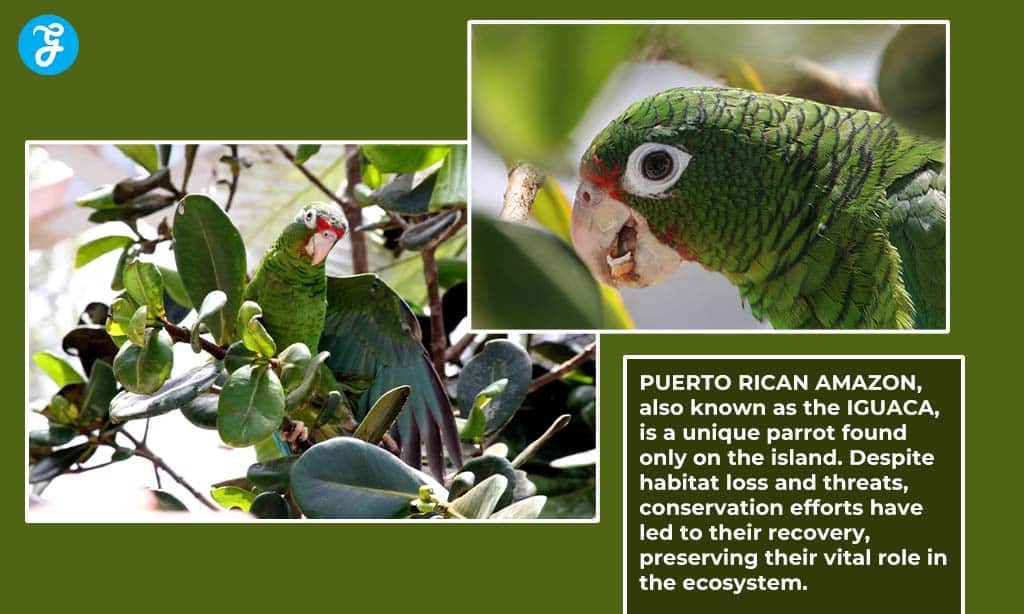
40. The island has its own endemic parrot, the Puerto Rican Amazon, once near-extinction
Did you know that Puerto Rico is home to an incredible parrot? The Puerto Rican Amazon, also called the iguaca, lives only on this island. This beautiful bird stands out with its green feathers, red forehead, and white eye rings.
Once, these parrots were everywhere in Puerto Rico. Sadly, due to habitat loss and other threats, their numbers dropped drastically. By 1975, only 13 parrots were left in the wild.
Efforts to save the Puerto Rican Amazon have been intense and ongoing. Conservationists set up breeding programs and protected habitats, trying hard to increase their numbers. Their work paid off, and now there are more of these parrots flying free again.
The Puerto Rican Amazon plays a vital role in its ecosystem by helping disperse seeds. This helps trees and plants grow, maintaining the health of the forests. Preserving these birds is essential for keeping the ecosystem balanced.
Today, seeing a Puerto Rican Amazon in the wild is more than just seeing a bird; it’s witnessing a success story. Conservation efforts continue, ensuring that this unique parrot remains part of Puerto Rico’s natural heritage.
Historical Background
Puerto Rico’s rich history ranges from its early indigenous populations to its period under Spanish rule. These eras laid the foundation for the island’s diverse culture and complex political status.
Early Indigenous Populations
The first inhabitants of Puerto Rico were hunter-gatherers who settled on the island over 1,000 years ago. They were followed by the Arawak Indians, who arrived around 1000 CE. The Arawak brought with them the Taíno culture, which became the dominant culture on the island.
The Taíno people farmed crops such as corn, beans, and sweet potatoes. They lived in large villages and had a matrilineal society, where lineage was traced through the mother’s line. They were skilled in creating pottery, weaving cotton, and building canoes.
Much of Puerto Rico’s indigenous culture was impacted by European colonizers, but remnants of Taíno heritage can be seen today in local customs, language, and place names.
Spanish Colonization
Christopher Columbus landed in Puerto Rico on his second voyage to the Americas in 1493. Spain quickly claimed the island and established colonies. They introduced new crops and brought enslaved Africans to work on plantations producing sugar cane, coffee, and tobacco.
Puerto Rico became a crucial part of Spain’s empire in the Caribbean. San Juan, Puerto Rico’s capital, was fortified with massive walls and forts to protect against pirates and other European powers. These structures, such as Castillo San Felipe del Morro, still stand today.
During Spanish rule, the local population faced oppression, and many indigenous people died from diseases brought by Europeans. Despite this, Puerto Rico remained under Spanish control until the Spanish-American War in 1898, when it was ceded to the United States.
Cultural Significance
Puerto Rico’s cultural significance is highlighted by its vibrant festivals and strong musical heritage. These elements showcase the island’s rich history and diverse influences.
Festivals and Traditions
Puerto Rico is famed for its lively festivals and unique traditions. The San Sebastián Street Festival in San Juan, held every January, is one of the most famous events. It features parades, music, food, and artisans selling handmade crafts. This celebration honors Saint Sebastian and attracts tourists from all over the world.
Another important tradition is Fiestas Patronales, which are patron saint festivals celebrated throughout the island. Each town has its own patron saint and hosts events like religious processions, games, and food fairs over several days. These festivals blend indigenous Taíno, African, and Spanish influences, showcasing the island’s cultural diversity.
The Puerto Rican Christmas season is another example of rich traditions. It lasts from late November to mid-January and includes unique customs like Parrandas, where groups go from house to house singing holiday songs. Homes are typically decorated with festive lights and nativity scenes.
Influence of Music and Dance
Music and dance are central to Puerto Rican culture. Reggaetón, a genre that emerged in the late 1990s, has become internationally renowned. Artists like Daddy Yankee and Bad Bunny have brought this style to the global stage, blending reggae, hip-hop, and Latin rhythms.
Traditional music also holds an important place. Bomba and Plena are genres that originated on the island. Bomba features call-and-response singing, drumming, and dance, reflecting African heritage. Plena, often called the “sung newspaper,” narrates everyday life and history through music.
Another significant influence is Salsa. Puerto Rico has produced many leading salsa musicians, including Héctor Lavoe and Willie Colón. Salsa dancing remains a popular activity, with many nightclubs dedicated to this energetic dance style.
The influence of music and dance is evident during festivals, where you’ll often find live performances and spontaneous dancing in the streets, adding to the island’s lively atmosphere.
Geographical and Ecological Wonders
Puerto Rico boasts unique biodiversity and natural beauty, from its rare species to lush rainforests. Discover the incredible ecological treasures that make this island a remarkable destination.
Unique Biodiversity
Puerto Rico supports a variety of unique species. The Puerto Rican Parrot is one of the rarest birds, found only in this region. You might also encounter the Coquí frog, a small amphibian famous for its distinct call, which is synonymous with the island.
Coral reefs surrounding Puerto Rico are home to diverse marine life. These underwater ecosystems support fish, crustaceans, and other sea creatures. Mona Island, often referred to as the “Galápagos of the Caribbean,” hosts many species not found anywhere else.
To preserve this biodiversity, multiple national parks and reserves focus on protecting these habitats. Efforts towards conservation ensure that these natural wonders are available for future generations.
El Yunque National Forest
El Yunque is the only tropical rainforest in the United States National Forest System. Located in northeastern Puerto Rico, it covers about 28,000 acres. Due to its diverse climate zones, the forest supports various plant and animal species.
One of El Yunque’s most famous attractions is the Tabonuco Forest, which features towering trees and unique flora. You can hike through numerous trails leading to spectacular waterfalls like La Mina Falls.
El Yunque is also vital for Puerto Rico’s water supply, with its rainfall feeding rivers and reservoirs throughout the island. Visiting this forest offers a chance to experience the natural beauty and ecological importance of Puerto Rico firsthand.
Puerto Rican Cuisine
Puerto Rican cuisine is a vibrant blend of Taino, Spanish, and African influences. This creates unique flavors in dishes that are bold and delicious. Let’s take a look at some signature dishes and the traditional ingredients that make this cuisine special.
Signature Dishes
- Pernil: This roasted pork shoulder is a staple during holidays. Its crispy skin, called cuerito, is a favorite.
- Mofongo: Made from deep-fried green plantains mashed with garlic and pork cracklings. It’s often served as a side or stuffed with meats like chicken or shrimp.
- Pollo Guisado: A comforting chicken stew with roots in Spanish cooking. It features tender chicken, potatoes, and carrots in a rich, flavorful sauce.
- Tripleta: A hearty sandwich with three types of meat: pork, ham, and steak. It’s packed with toppings like cheese, lettuce, and tomatoes.
- Arroz con Gandules: Rice with pigeon peas is a must-try. This dish combines white rice, pigeon peas, and a flavorful sofrito.
Traditional Ingredients
- Plantains: Used in dishes like mofongo and tostones, these starchy fruits are fried and mashed to add a unique texture.
- Sofrito: A blend of onions, peppers, garlic, and herbs. It’s the base for many Puerto Rican dishes.
- Recaito: Made with cilantro, culantro, and green peppers. This is another key ingredient in the island’s cuisine.
- Adobo and Sazón: Spice blends used to season meats, giving them their distinctive flavor.
- Pigeon Peas: An essential component of Arroz con Gandules, adding both texture and taste.
- Pork: Featured prominently in pernil and lechón, pork is a beloved protein in Puerto Rico.
These dishes and ingredients showcase the rich culinary heritage of Puerto Rico. Each bite offers a taste of the island’s history and culture.
Conclusion
Puerto Rico is a fascinating place with a rich blend of cultures. From its indigenous Taíno roots to the Spanish influence, each era has left its mark. Our travel team has tried to cover up all fun facts about Puerto Rico here. Hopefully, you can enjoy the content.
You can wander through historic forts, enjoy vibrant festivals, and experience delicious cuisine. Each visit uncovers something new.
The island’s unique political status as a commonwealth adds another layer of intrigue. Puerto Ricans are U.S. citizens, yet the island is not a state.
Puerto Rico Facts Recap:
- Taíno origins
- Spanish colonial influence
- U.S. commonwealth
Why Visit Puerto Rico?
- Stunning beaches: Enjoy crystal-clear waters and sandy shores.
- Rich history: Explore ancient fortresses and heritage sites.
- Vibrant culture: Participate in colorful festivals and events.
Whether you are interested in history, nature, or just lounging on the beach, Puerto Rico offers a unique and memorable experience.










